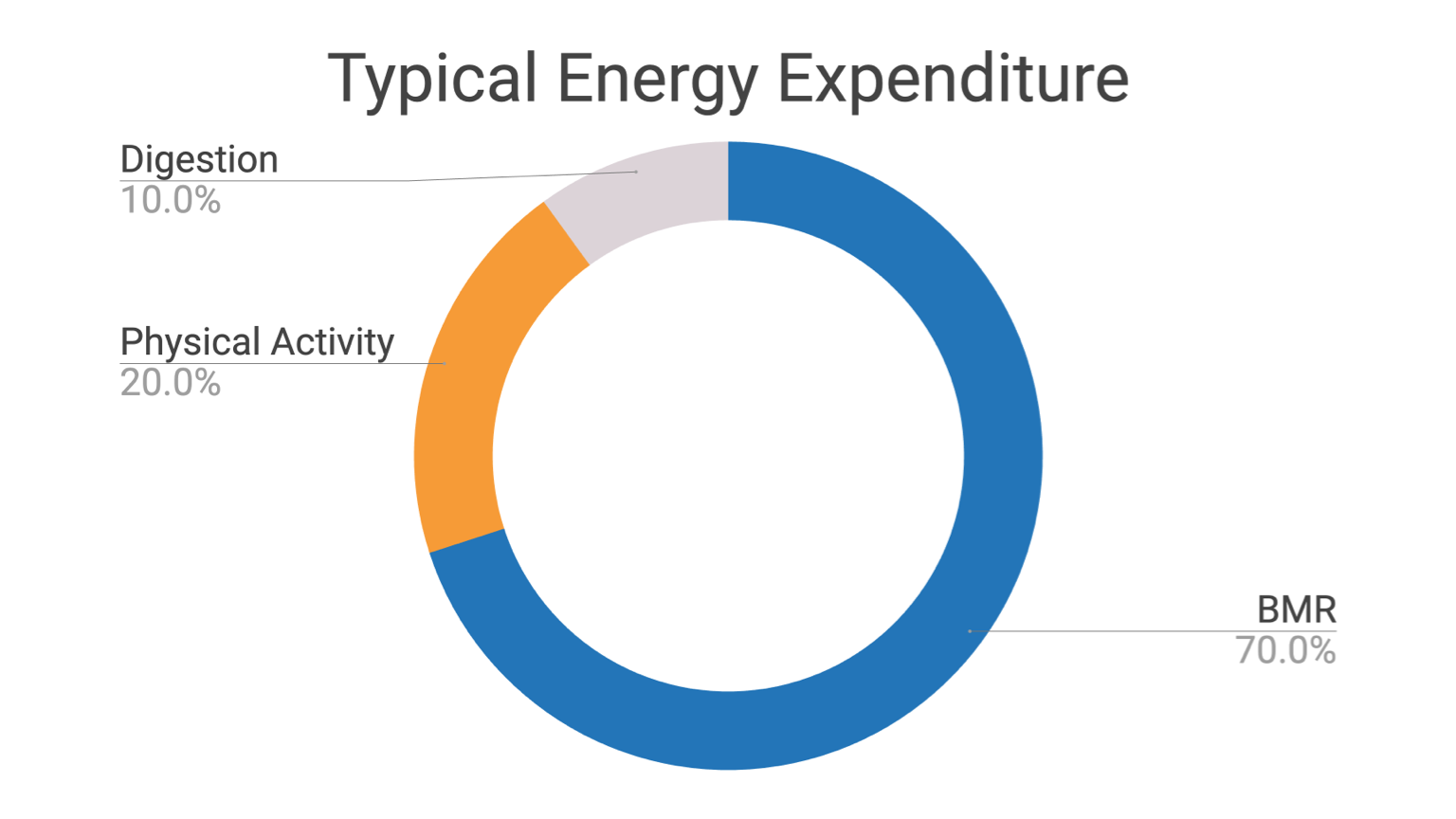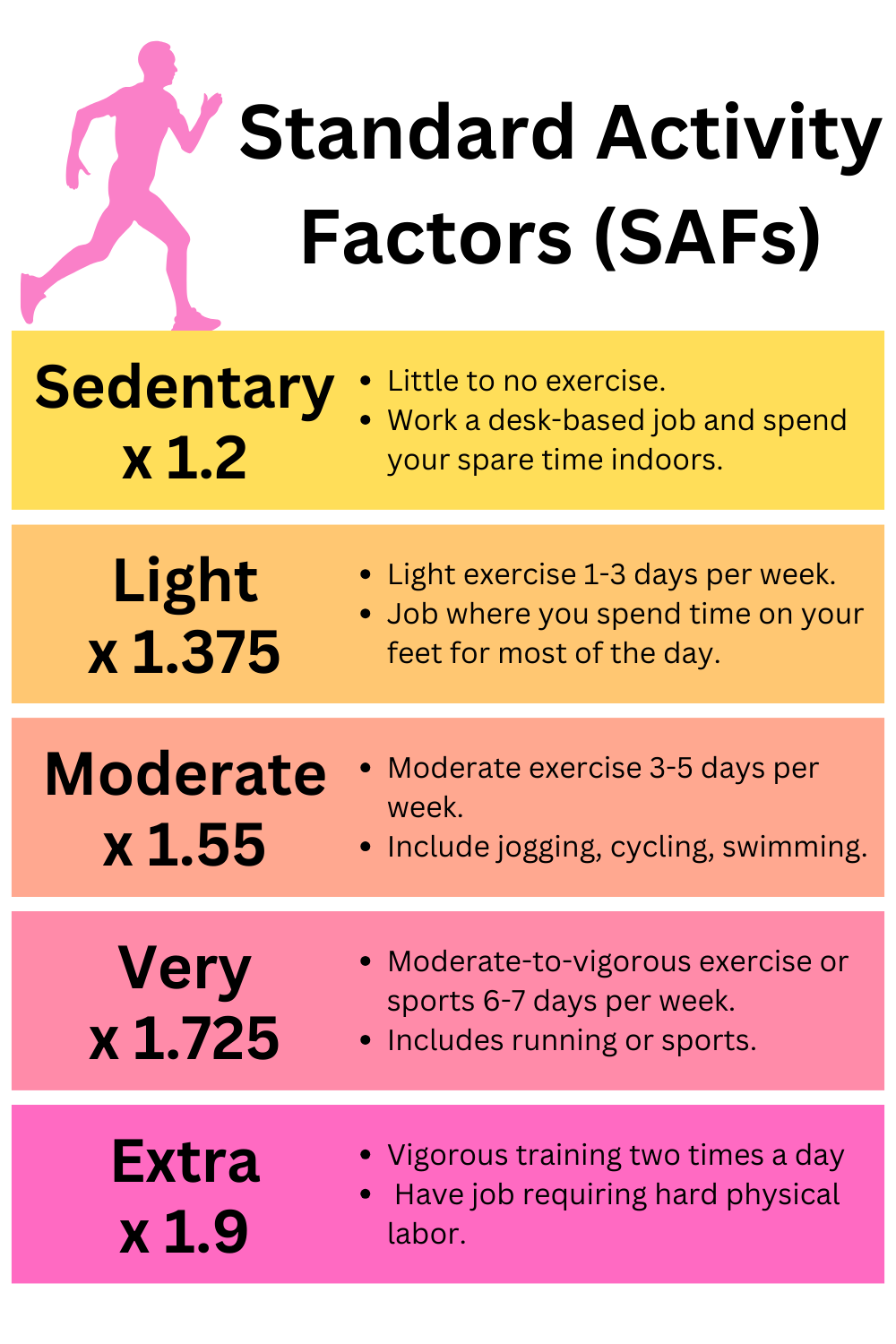Links marked with * — Partner products have been carefully selected by Gym Geek. When you purchase a product through one of these links, we may earn an affiliate commission. As an Amazon Associate we earn from qualifying purchases.
![]()
Most Popular Calculators
Calculators to try next:
Our BMR calculator is a useful tool that estimates your basal metabolic rate (BMR) and total daily energy expenditure (TDEE). Your BMR is the number of calories your body consumes at rest, and is an important number to consider if you are looking to lose or maintain weight, or if you are aiming to build more muscle mass.
What is BMR?
BMR, or Basal Metabolic Rate, is the number of calories your body needs at total rest to power your most basic functions. This includes the baseline activity of your organs, but does not include the digestion of food. It also doesn’t include any calories you need for physical activity and exercise.
BMR typically increases with your weight and height, because you have a larger body mass to support. However, you can expect your BMR to decrease over time as you age. This is because most people lose muscle mass and gain fat as they age.
How is BMR calculated?
A number of formulas for estimating BMR have been created over time. These formulas are produced by statistical studies that look at representative populations, measuring their BMR and crunching the data to build accurate formulas.
Our calculator uses the Mifflin-St Jeor equation, which came out of a 1990 study of 498 people across both genders, all age groups and normal weight and obese persons. The study introduced a formula based on a person’s weight, height, age and gender.
For men, the formula is 9.99 x Weight + 6.25 x Height – 4.92 x Age + 5.
For women, the formula is 9.99 x Weight + 6.25 x Height – 4.92 x Age – 161.
Is Mifflin-St Jeor accurate?
BMR calculators using Mifflin-St Jeor are fairly accurate for most people. The formula, however, does not account for specific factors like muscle mass. Specifically, if you have a high muscle mass, you may find that Mifflin-St Jeor underestimates your BMR. This is because muscle burns more calories than fat cells at rest.
If you are overweight or obese, it’s likely that Mifflin-St Jeor will overestimate your BMR.
A study published in the Journal of the American Dietetic Association concluded that the Mifflin-St Jeor equation was more likely to estimate calorie needs to within 10% compared to other equations.
What is TDEE?
TDEE, or Total Daily Energy Expenditure, estimates the total number of calories you burn each day. Because BMR is your energy burn at rest, it makes up around 70% of your total energy needs. Physical activity contributes around 20%, with the remaining 10% coming from the ‘thermic’ effect of digestion. Taking your BMR, and adding the contributes for physical activity and digestion produces an estimate for your TDEE.

Harris-Benedict Standard Activity Factor
Our calculator estimates your TDEE by multiplying your BMR by an activity level. The activity levels are called Standard Activity Factor (SAF) scores, and they range from 1.2 (+20%) to 1.9 (+90%), depending on your level of physical activity.
To estimate your TDEE, you will need to determine which SAF score fits your lifestyle best:
- Sedentary (SAF = 1.2) – Your daily life involves little to no exercise. You may work a desk-based job and spend your spare time indoors with little physical activity.
- Light Activity (SAF = 1.375) – You take part in light exercise or sports 1-3 days per week. If you work in a job where you spend time on your feet for most of the day, this may be an appropriate factor.
- Moderate Activity (SAF = 1.55) – You take part in moderate exercise or sports 3-5 days per week. This can include activities like jogging, cycling or swimming for at least 30 minutes each day.
- Very Active (SAF = 1.725) – You take part in moderate-to-vigorous exercise or sports 6-7 days per week. This can include running or playing competitive sports.
- Extra Active (SAF = 1.9) – You take part in vigorous training two times a day or have job requiring hard physical labor.

How to use the BMR calculator?
To use the BMR calculator, input your age, gender, weight and height. Also select the Standard Activity Level that most closely matches your lifestyle. The calculator will output both your Basal Metabolic Rate (BMR) and Total Daily Energy Expenditure (TDEE).
References
Keys, A., Taylor, H. L., & Grande, F. (1973). Basal metabolism and age of adult man. Metabolism, 22(4), 579-587.
Fabio Comana, M. S., & PES, C. Comparing Energy Expenditure Prediction Equations.
Mifflin, M. D., St Jeor, S. T., Hill, L. A., Scott, B. J., Daugherty, S. A., & Koh, Y. O. (1990). A new predictive equation for resting energy expenditure in healthy individuals. The American journal of clinical nutrition, 51(2), 241-247.
Frankenfield, D., Roth-Yousey, L., Compher, C., & Evidence Analysis Working Group. (2005). Comparison of predictive equations for resting metabolic rate in healthy nonobese and obese adults: a systematic review. Journal of the American Dietetic association, 105(5), 775-789.


